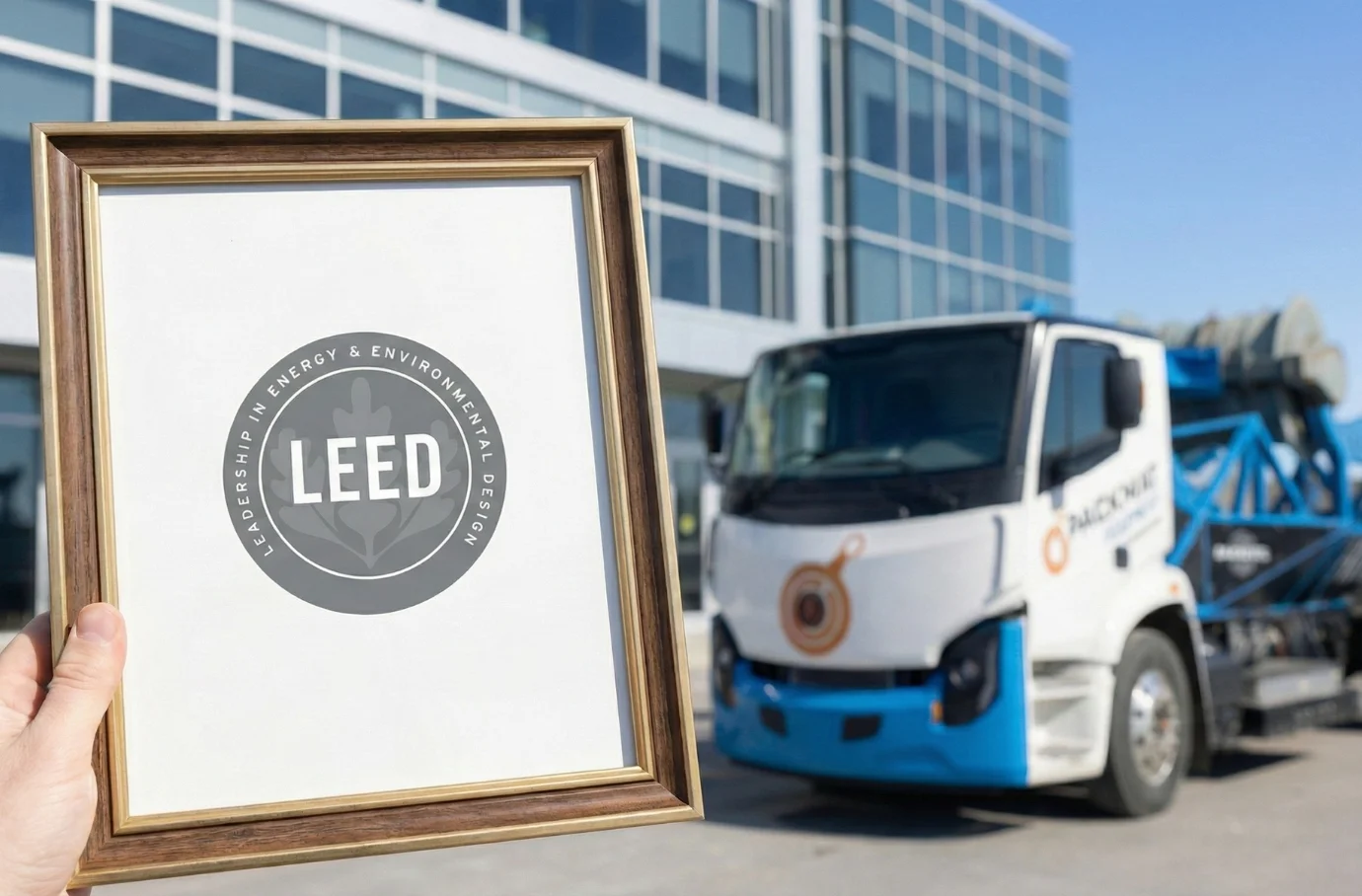The waste management industry is undergoing a quiet revolution. Facility managers, haulers, and sustainability leaders now face a fundamental decision: should they choose electric or diesel waste compactors? At Packmat Equipment, we’ve been there with our clients through every nuance of that decision, so let’s dive deep into what really matters, the total cost of ownership and the true environmental impact.
The Changing Landscape of Mobile Waste Compaction
Traditionally, diesel has powered the majority of waste compactors, it’s familiar, it’s reliable, and infrastructure is well-established. However, as governments, municipalities, and private-sector partners double down on emissions targets and the demand for cost efficiency grows, electric options are moving to the forefront. The line between the two has become less about brand loyalty and more about clear business value.
Understanding Total Cost of Ownership (TCO)
Total cost of ownership for waste compactors involves far more than sticker price. Here’s the breakdown you need to consider for both electric and diesel model.
Diesel Waste Compactors: TCO Unpacked
Electric Waste Compactors: TCO Unpacked (Packmat PX601 Example)
Comparing Daily Operations: Real Impact
Let’s get personal about what daily usage feels like for each
Environmental Emissions: Not Just About Tailpipes
Everyone focuses on what comes out of the tailpipe, but true emissions analysis means considering well-to-wheel impacts, fuel sourcing, delivery, idle time, and even embodied energy in manufacturing.
Why Diesel Still Matters (and Where It Falls Short)
Diesel is energy-dense and widely available, making it practical in remote settings or where grid reliability is low. However, every hour it idles or runs means more particulate, NOx, and CO₂ emissions. In urban or regulated settings, it’s increasingly seen as a liability instead of an asset.
Electric Compactors: A New Standard for Clean Operations
With electric compactors, particularly our PX601 that can be mounted on 100% electric trucks, emissions during compaction are eliminated. Silent operation, reduced maintenance, and the ability to draw zero energy from the truck’s main propulsion battery means you’re not just shifting emissions, you’re eliminating them at the compaction site.
Other Considerations Beyond Ownership & Emission
- Future Proofing: Zero-emission zones, upcoming diesel restrictions, and public perception all favor electric. An electric fleet helps organizations meet Environmental, Social, and Governance (ESG) targets proactively.
- Worker Safety & Retention: Reduced noise, vibration, and operator comfort are proven contributors to a safer, more attractive workplace. (Packmat’s joystick controls and cab environment are designed with this in mind.)
- Regulatory Compliance: Incentives for electrification are only increasing in North America. Diesel regulations grow stricter each year, often incurring new cost layers for compliant fleets.
- Integration with Smart Technology: Electric platforms are easier to retrofit with real-time monitoring, telematics, and predictive maintenance tools. Our solutions offer operator-friendly controls and a network of safety cameras for this reason.
Packing It All Together: Which Should You Choose?
For many operators, immediate needs and existing infrastructure matter. If your sites are remote, or your waste compaction needs vary unpredictably, diesel may remain practical for the short term. But for urban and suburban collection, where efficiency, emissions, and cost all weigh heavily, electric compactors like the Packmat PX601 are redefining industry expectations.
Where Packmat Fits In Your Decision
At Packmat Equipment, we’ve engineered our mobile waste compaction solutions from the ground up for sustainability, safety, and total performance, creating options for both diesel and electric applications, always with your containers’ protection in mind.
We believe the best way to choose is by taking a holistic view: calculate true cost, anticipate regulations, and measure against your sustainability goals. Ready to see what going electric could mean for your bottom line and emissions profile? Contact us for a tailored consultation or explore our latest electric and diesel compaction products to experience the Packmat difference.
Easy steps to create a color palette
Lorem ipsum dolor sit amet, consectetur adipiscing elit lobortis arcu enim urna adipiscing praesent velit viverra sit semper lorem eu cursus vel hendrerit elementum morbi curabitur etiam nibh justo, lorem aliquet donec sed sit mi dignissim at ante massa mattis.
- Neque sodales ut etiam sit amet nisl purus non tellus orci ac auctor
- Adipiscing elit ut aliquam purus sit amet viverra suspendisse potent
- Mauris commodo quis imperdiet massa tincidunt nunc pulvinar
- Excepteur sint occaecat cupidatat non proident sunt in culpa qui officia
What is a color palette?
Vitae congue eu consequat ac felis placerat vestibulum lectus mauris ultrices cursus sit amet dictum sit amet justo donec enim diam porttitor lacus luctus accumsan tortor posuere praesent tristique magna sit amet purus gravida quis blandit turpis.
Don’t overspend on growth marketing without good retention rates
At risus viverra adipiscing at in tellus integer feugiat nisl pretium fusce id velit ut tortor sagittis orci a scelerisque purus semper eget at lectus urna duis convallis porta nibh venenatis cras sed felis eget neque laoreet suspendisse interdum consectetur libero id faucibus nisl donec pretium vulputate sapien nec sagittis aliquam nunc lobortis mattis aliquam faucibus purus in.
- Neque sodales ut etiam sit amet nisl purus non tellus orci ac auctor
- Adipiscing elit ut aliquam purus sit amet viverra suspendisse potenti
- Mauris commodo quis imperdiet massa tincidunt nunc pulvinar
- Adipiscing elit ut aliquam purus sit amet viverra suspendisse potenti
What’s the ideal customer retention rate?
Nisi quis eleifend quam adipiscing vitae aliquet bibendum enim facilisis gravida neque euismod in pellentesque massa placerat volutpat lacus laoreet non curabitur gravida odio aenean sed adipiscing diam donec adipiscing tristique risus amet est placerat in egestas erat.
“Lorem ipsum dolor sit amet consectetur adipiscing elit, sed do eiusmod tempor incididunt ut labore et dolore magna aliqua enim ad minim veniam.”
Next steps to increase your customer retention
Eget lorem dolor sed viverra ipsum nunc aliquet bibendum felis donec et odio pellentesque diam volutpat commodo sed egestas aliquam sem fringilla ut morbi tincidunt augue interdum velit euismod eu tincidunt tortor aliquam nulla facilisi aenean sed adipiscing diam donec adipiscing ut lectus arcu bibendum at varius vel pharetra nibh venenatis cras sed felis eget.





.webp)